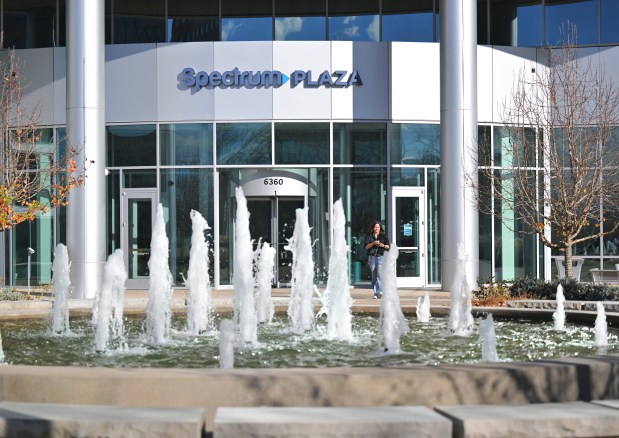
DaVita, Arrow Electronics, Charter Communications, VF Corp, and Gusto are major employers in Colorado. And while they operate in very different industries, they share something in common.
They either relocated to the state or boosted hiring after receiving assistance from Job Growth Incentive Tax Credit program, which the General Assembly approved in response to the Great Recession, which cost the state 137,600 jobs in 2008 and 2009.
From the first award in 2009 through this summer, employers have contracted to provide up to 48,000 jobs in return for up to $788.4 million worth of state tax breaks. So far, those 169 awards have generated $242 million worth of state tax credits tied to the creation of 21,000 jobs, according to a Denver Post analysis of numbers provided by the Colorado Office of Economic Development and International Trade.
“From the state’s perspective, the direct positive fiscal impact comes from job creation, from workers paying state sales tax and state income tax,” said Jeff Kraft, director of business funding and incentives at OEDIT. In return for each job created, the state provides employers a credit against corporate income taxes tied to half of the payroll taxes generated.
The program has made a big difference in attracting companies more focused on hiring than making big capital investments, which the state’s once-dominant incentive, the Enterprise Zone program, emphasizes, with several of the companies recruited now fixtures in the economy. However, the businesses associated with the JGITC have mostly set up shop along the Front Range, and the influx of higher-wage workers may have exacerbated the sharp rise in housing costs, something the state is trying to remedy so it can remain competitive.
The first “mega” deal the JGITC helped bring to the state in 2009 was DaVita, a kidney dialysis company that relocated from El Segundo, Calif. The company has established a large presence in the Central Platte Valley, while also drawing its share of controversy over the years.
DaVita was awarded $5.3 million in state tax credits in 2009 in return for bringing 500 jobs to the state, a promise it delivered on. The company came back in 2014, winning approval for another $3 million tied to the addition of 215 jobs, of which 94 have been added and $918,000 in tax credits claimed.
It applied again in 2015, winning an award of $12.7 million tied to the addition of 800 jobs. The company reported adding only 438 of those jobs and has claimed $6.1 million of that award.
Charter Communications has been awarded and claimed more Job Growth Incentive Tax Credits than any other company, using them to support a major employment hub in metro Denver despite the state not being a major market for its Spectrum cable services.
The company, based in Stamford, Conn., received approval for $59.1 million in job growth incentives between October 2013 to March 2017 and has claimed $52.9 million following its creation of 2,200 jobs, which works out to $24,300 per job.
Companies can only claim credits based on the jobs listed on the initial application. Charter created 3,300 jobs tied to those three awards, putting the state’s payout closer to $16,030 per job. And it has continued to grow, with 5,500 employees located in the state.
“This powerful incentive has helped us rapidly grow two dynamic organizations at Charter in an extremely competitive tech employee marketplace: Our product and technology team, which drives innovation in broadband, video and the fastest-growing mobile service in the country, and our network operations group, which is responsible for fast, reliable and secure connectivity for more than 32 million customers across 41 states,” said Adam Falk, senior vice president of state government affairs at Charter, in an email.
Comcast, another cable provider, also turned to the JGITC between January 2012 and January 2016 as it expanded, receiving approval for $26.6 million in awards tied to the creation of 1,693 jobs. The company claimed $14.5 million in tax credits tied to the creation of 1,058 jobs in its first two awards, but nothing in its third in 2016, which was for a customer call center in Fort Collins.
“Comcast didn’t collect any of the tax incentive credits for this project because it did not meet the job requirement threshold for any of those incentives,” said Leslie Oliver, a spokeswoman for the company.
Fidelity Investments was looking to add 400 jobs in Denver when it requested $8.1 million in incentives from the state. It added those, plus another 681 beyond that initial request.
“We currently have about 2,400 associates in Colorado,” said Kacey Brister, a senior manager of external communication at the Boston-based money manager.

Jobs over capital
The JGITC was designed to offer an alternative to the Enterprise Zone program, which for years was the state’s dominant economic development incentive tool. That program rewarded substantial capital investments but was hit or miss when it came to job creation.
Installing a natural gas pipeline or a wind farm are both capital-intensive projects typically located in rural areas, the kind of investment that aligns well with the Enterprise Zone program.
They require a lot of labor on the front end but can be operated by a handful of people over time, reducing the payback the state, not to mention taxpayers, would receive. Also, over the years the enterprise zone boundaries expanded to cover 70% of the state, diluting the original mission of the program to help economically distressed areas.
A Denver Post analysis found that in 2010, companies that claimed $75 million in enterprise zone tax credits had only created 564 jobs, which works out to a cost of $133,00 per job. The state regularly gave incentives to companies that ended up downsizing and shrinking the tax base.
The JGITC offered an antidote. Companies only receive a tax break if they create and retain the job pledged. And the payout per job so far is roughly $11,547, a fraction of what the Enterprise Zone program cost per employee in 2010.
The credit has also proven to be far more attractive to capital-light service and technology firms that have become a bigger part of the economy, and whose workers are more likely to want to live in the heart of the action rather than in a sparsely populated or distressed area.
Kraft said the JGITC program also shows “breakage” all along the way, which has reduced the state’s obligation. Of the 351 awards granted, only 170 have resulted in signed incentive contracts with the state. And of the $788.4 million granted in incentives under those contracts, companies have requested only $242 million in tax breaks.
More recent awardees are just starting their hiring programs, so some of that gap comes down to a timing issue. Some companies simply don’t hit their hiring targets and fade away, while others lose track of the incentives they are eligible for or don’t bother to claim them.
And a tax break only works if taxes are due. The incentive isn’t of much use to startups and other companies losing money. Companies are more likely to lose money in a recession, which lines up with when the state would prefer not to give out tax breaks.
Because of the privacy rules around tax returns, Karft said OEDIT doesn’t know what share of the $242 million granted in tax credits has actually been used to offset taxes. Estimates that upward of half of the credits earned, already a fraction of those awarded, are claimed to offset any state income tax liability.
Because of the breakage that happens all the way along the program, Kraft said the JGITC program is estimated to generate about $2.20 in additional tax revenues to the state for every $1 ceded in a tax break, meaning it pays for itself and then some.
How the incentive works
In its current form, the Job Growth Incentive Tax Credit provides qualified employers a state tax credit equivalent to 50% of the payroll or FICA taxes they generate for each job created and retained for a year. The amount of the initial award is based on how many jobs are expected to be created and the average annual wage those jobs pay.
Wages must be equal to or higher than the average for the county where the jobs are being located. That threshold was lowered in 2014 from the original hurdle of 110% in an attempt to speed up the job recovery.
The situation must be competitive, meaning that employers must be considering at least one other state or country besides Colorado. And the employer applying can’t have already committed to a location in Colorado, say by signing a lease, buying real estate or hiring new staff for the new project.
“They (applicants) push hard to get a sense if it is viable for them to locate in another state. We want to make sure they are in a competitive situation,” Kraft said.
As the economy improved last decade, OEDIT became pickier about what industries it would consider for credits, and as the economy has shifted over time, the program has continued to maintain its appeal to different industries.
When tech companies were relocating out of California or expanding out of countries like Israel and New Zealand, applications came in from that direction. With software in a downturn and battery cell and semiconductor manufacturing getting a boost from federal tax incentives, more manufacturers are now filling up the pipeline.
Sean Gould, deputy director of financial analysis, business funding and incentives at OEDIT, said a lot of screening takes place on the front end, noting the application itself can be arduous, with 60 to 70 questions and a competitive analysis of other locations required.
Most companies that start down the path of an application complete it. And with some rare exceptions, applicants who come before the Colorado Economic Development Commission win approval. But the follow-through after approval is a mixed bag.
Of the 351 JGITC applications that the commission has approved from 2009 through this summer, eight were inactive, 32 were in limbo, and 57 chose another state or decided to not pursue hiring plans.
About seven in 10 of the approved applicants, or 254 going back to the start of the program, were active and chose to hire in Colorado. But of that group, 170 had entered into incentive contracts with the state, and those companies had only claimed a third of the tax credits available to them.
Some of that is a timing issue. Recent recipients are still in the hiring phase and haven’t claimed credits. Other times, executives want to show they obtained the best relocation deal possible, and the award represents more of a psychological triumph than a financial one.
And events can overtake the best-laid plans.
In November 2019, Southwest Airlines was approved for $12.5 million in job growth incentives tied to the creation of 1,013 jobs. Four months later, the pandemic grounded airline travel. Airlines were looking at furloughing and firing, not hiring. Southwest hasn’t reported any jobs added under that award.
Chekr, a tech company that provides background checks, received approval for $27.8 million in JGITC incentives in March 2019 based on a plan to create 1,472 jobs in Denver for a second headquarters.
The award was one of the largest made, but so far Chekr isn’t reporting any jobs created, even though the company maintains a Denver office, according to its website.
About a year after it won its incentive award, Chekr faced lawsuits tied to allegations it approved background checks for ridesharing drivers who assaulted their passengers. Its growth plans didn’t pan out.

An argument against incentives
Because of its popularity, the JGITC program has created imbalances that the state has tried to address by creating other incentive programs. Despite a concerted effort to distribute the awards more evenly across the state, most of the jobs created under the JGITC have been concentrated in a narrow corridor from Fort Collins to Colorado Springs.
The program normally requires a minimum of 20 jobs to qualify for credits, but that threshold goes down to five if the jobs are located in an Enterprise Zone. That hasn’t been enough to spread out the awards, which skew larger and urban.
To boost hiring in more sparsely populated areas, the state launched the Rural Jumpstart program in 2016. It is an incentive program on steroids, providing multiple tiers of state and local tax breaks.
Although it is hard to prove a one-to-one correlation, the influx of higher-paying jobs likely contributed to the region’s disproportionate rise in rents and home prices. Natives found themselves increasingly priced out as workers from California and other higher-cost states moved in to claim higher-paying jobs that could support the higher housing costs.
OEDIT, in its focus on bringing jobs to the state, wasn’t as focused on where those workers would live until that became a problem in recruiting. To address that, the state has rolled out the Innovative Housing Incentive Program to support firms developing innovative construction techniques and providing modular and other affordable housing options.
Whereas a homebuilder or general contractor might have had trouble accessing the JGITC early on, they are now being welcomed with open arms. On Thursday, the state approved $4.9 million in job growth credits to a construction firm based in Greeley looking to add 589 new jobs, most likely Hensel Phelps.
Greg LeRoy, executive director of Good Jobs First, which describes itself as a watchdog on state and local incentives, said incentive programs gloss over the fundamental question of whether they “cause something to happen that wouldn’t happen.”
One way that manifests is when local companies with decades of history in the state and no intention of ever leaving apply for credits under the JGITC program by threatening to take their headquarters elsewhere. That said, they may also be put off that state tax breaks are supporting out-of-state companies moving in, while they are excluded.
LeRoy said that payroll-based incentives shift more of the tax burden from corporations to individuals and reduce the revenue stream of state governments. Colorado, which offers a 50% payroll credit, isn’t the most egregious, but it was bad enough to be included in a 2012 study the group did on the topic.
In the aggregate, state and local taxes constitute only 1.8% of corporate spending, LeRoy said. Other costs, such as labor, energy, real estate and transportation weigh much more heavily on the bottom line when it comes to determining where jobs will be located.
And yet states continue to battle each other, essentially engaging in job piracy and bleeding out potential revenues to snag jobs that may have come their direction anyway based on more important considerations, like a skilled workforce, he said.
“It is microscopic to the companies, but not to the state budget,” he said regarding the diverted taxes.
Kraft counters that Colorado tries to avoid being on the high end of the scale when it comes to incentives. But it has to be competitive, and the JGITC program has provided a way to do so without throwing cash from state coffers on the table.
“It is a way of showing a company you want them there and it really gets some of them to come. And you aren’t using scarce General Fund dollars,” said Kraft.
Get more business news by signing up for our Economy Now newsletter.


